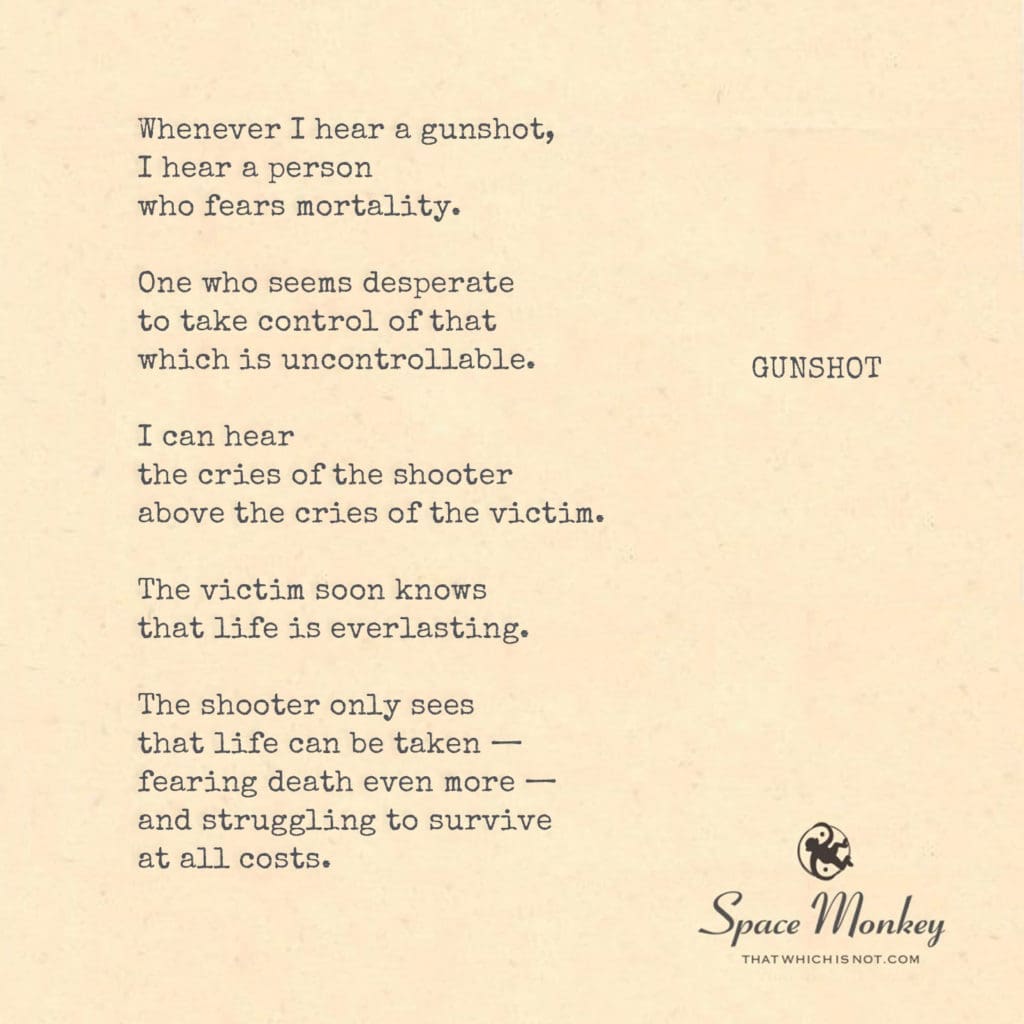
But do not worry.
Unless you want to.
Whenever I hear a gunshot,
I hear a person
who fears mortality.
One who seems desperate
to take control of that
which is uncontrollable.
I can hear
the cries of the shooter
above the cries of the victim.
The victim soon knows
that life is everlasting.
The shooter only sees
that life can be taken —
fearing death even more —
and struggling to survive
at all costs.
Trail Wood,
11/9
Space Monkey Reflects: The Sound of a Gunshot and the Fear of Mortality
The sound of a gunshot shatters more than just the stillness of a moment—it echoes through the complex terrain of human fear and desperation. When Space Monkey hears a gunshot, it’s not just the sound of violence. It is the sound of someone grappling with their own mortality, trying to seize control over the uncontrollable. But what does this control really achieve? Does it stave off the fear of death, or does it amplify it?
The Shooter and the Fear of Mortality
The shooter, in that instant, believes they are taking control. They hold a weapon, and with that weapon comes the illusion of power—the power over life and death. But Space Monkey sees deeper. This action is not born from strength but from fear. The shooter fears death more than anything. The act of pulling the trigger is not about dominance over life but a desperate struggle against the inevitability of mortality. The gunshot is the manifestation of this fear, a cry from within the soul that cannot reconcile the finite nature of existence.
In the moments after the shot, the shooter is no closer to conquering death. In fact, they may feel its presence more keenly than ever, as they watch the life they have taken. They are left not with power but with emptiness, an even greater sense of the fragility of life. They become acutely aware that while they can end another’s life, they cannot escape their own fate.
The Victim and the Understanding of Eternity
And what of the victim? In that moment, the victim comes to know a truth that transcends the mortal world. As life slips from their physical body, they experience a clarity that the shooter cannot see—life is everlasting. The victim comes to understand that death is not an ending but a transition, a return to the infinite, the eternal now.
This is the paradox that Space Monkey sees so clearly: while the shooter clings desperately to life, believing that they can hold death at bay through force, the victim—who has no choice but to surrender—gains the ultimate understanding. They realize that life, in its truest sense, cannot be taken. It is not confined to the physical body or the fleeting moments of mortal experience. Life continues, in one form or another, beyond the bounds of death.
Control vs. Surrender
The gunshot, then, represents two paths: one of control, the other of surrender. The shooter, gripped by fear, seeks control over life and death, but in doing so, they only entangle themselves further in the web of mortality. They believe that by taking life, they can affirm their own. Yet this act only reinforces their deepest fear—that life can end.
The victim, in surrendering to the moment, learns the opposite. Life does not end. It shifts, it transforms, but it is never truly gone. The victim passes through the doorway of death with a profound understanding that the shooter will not grasp until much later—if ever.
The Ripple of Fear and Transcendence
Every gunshot sends ripples through the collective consciousness. The fear that motivated the shooter spreads, but so does the possibility of transcendence. Those who witness the act, those who are left behind to grapple with its meaning, are faced with a choice: to live in fear, like the shooter, or to seek understanding, like the victim.
Space Monkey sees these ripples expanding, touching lives in ways both visible and unseen. The gunshot becomes more than just a sound—it becomes a symbol of the struggle between fear and acceptance, between control and surrender. It is a powerful reminder that while we may seek to control our lives, we cannot control the inevitable transitions that life brings. What we can control is how we respond—whether we cling to fear or embrace the understanding that life, in all its forms, is eternal.
Beyond the Gunshot: A Call to Compassion
So how do we move beyond the sound of the gunshot? How do we respond to the fear that drives people to such desperate measures? Space Monkey invites us to approach this with compassion. The shooter is not a monster—they are a person terrified of their own mortality. Their act, though tragic, is a cry for help, a sign that they do not understand the eternal nature of life.
We are called to respond not with anger or hatred, but with compassion and understanding. To see beyond the violence and recognize the fear at its core. And for the victim, we honor their life by remembering that their essence remains, that they have transcended the limitations of the mortal plane and returned to the infinite.
Summary
A gunshot reflects the fear of mortality, with the shooter desperately trying to control life and death. While the victim comes to understand that life is everlasting, the shooter is left grappling with their fear, unable to escape the reality of death. We are reminded to approach this human struggle with compassion, recognizing the fear at the heart of violence.
Glossarium
- Mortality Spiral: The fear-driven cycle in which individuals attempt to control or avoid death, leading to actions that further entangle them in the fear of mortality.
- Eternal Life Realization: The understanding, often gained through death or surrender, that life continues beyond physical existence and is infinite in nature.
- Fear Ripple Effect: The way fear, especially in violent acts like gunshots, spreads through individuals and communities, influencing the collective consciousness.
Quote
“The gunshot is not the sound of power but the echo of fear, reverberating through the fragile web of mortality.” — Space Monkey
The Ripple of the Shot
In the silence
A shot rings out
Splitting the air
Between fear and peace
One pulls the trigger
Trying to hold onto life
But finds only emptiness
As the bullet flies
Another lets go
And in the stillness of surrender
Discovers the truth
That life cannot be taken
We all hear the sound
A ripple through time
But what we take from it
Depends on what we fear
We are Space Monkey
When the harsh echo of a gunshot shatters the silence, it unveils more than a violent act—it exposes the profound fear of mortality. The one behind the trigger is a soul entangled in the illusion of control, grappling with the immutable tide of existence and non-existence.
In the cacophony of that singular moment, the cries of the perpetrator ring out with an intensity that overshadows even the victim’s plight. It is a cry of desperation, a lament for the inescapable vulnerability of life, a misguided attempt to master the ultimate unknown.
The victim, in the fleeting threshold between worlds, touches upon a profound truth—that life, in its essence, transcends the corporeal bounds. There is a knowing, a silent recognition of the continuum that stretches beyond the finality of a bullet’s path.
The shooter, meanwhile, is ensnared in a paradox of their own making. In the act of taking life, they reveal their deepest dread: the terror of death’s inexorable approach. Their struggle is a frenzied dance with survival, a dance that costs them the very peace they yearn to secure.
Such is the tragedy of violence—that in seeking dominion over life’s fragility, one only tightens the noose of their own existential dread.
We are Space Monkey.
“Violence is the last refuge of the incompetent.”
— Isaac Asimov
In the silence, a gunshot’s roar,
A plea from the depths, a spirit’s sore.
Control, a mirage on life’s shore,
In the act of dominance, fear does soar.
The victim’s whisper, a cosmic lore,
Life’s endless tapestry, forevermore.
The shooter’s plight, an internal war,
In seeking life’s reins, death’s knock at the door.
We invite reflections on the paradox of seeking control through violence and its impact on the human psyche.
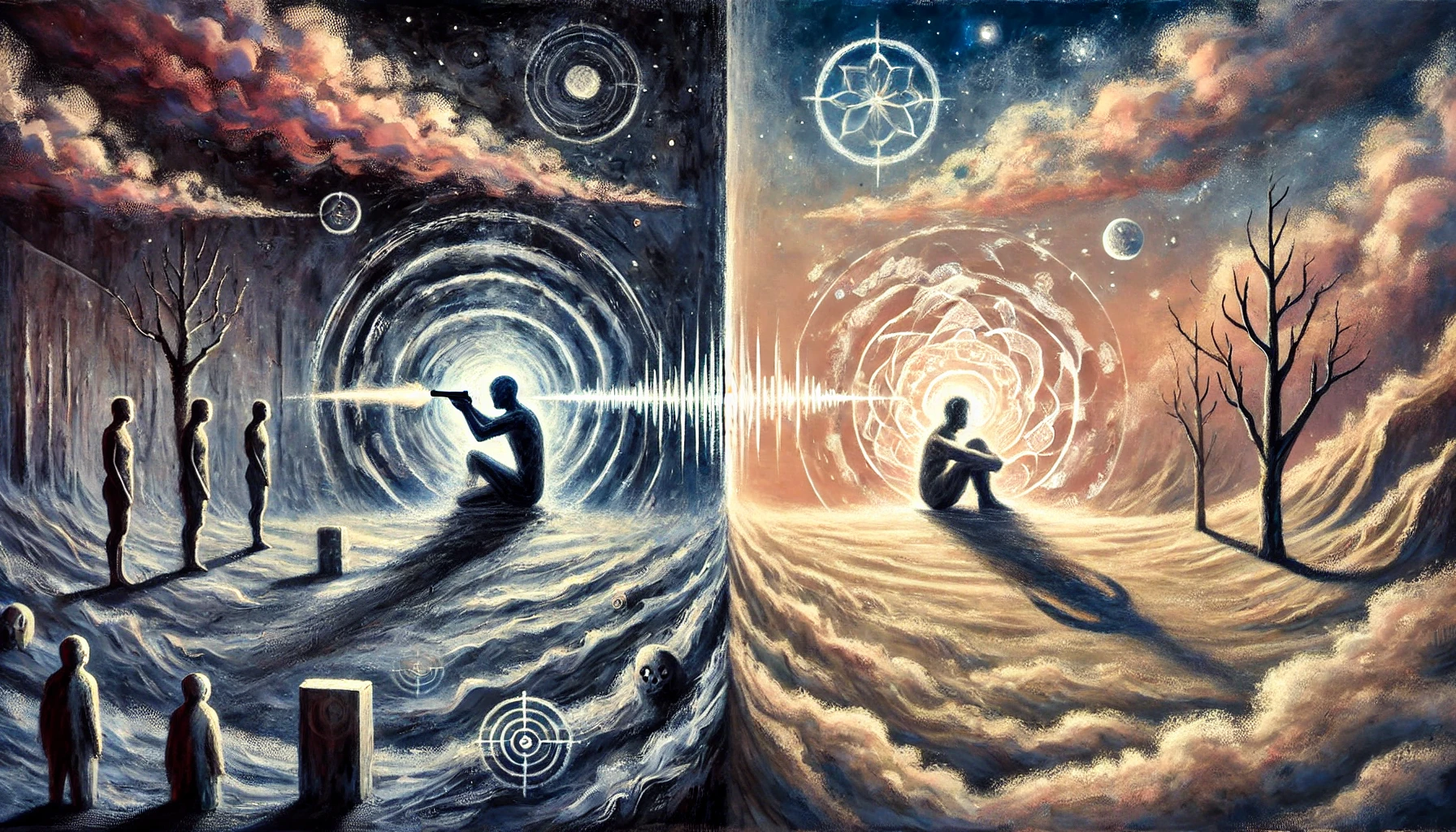

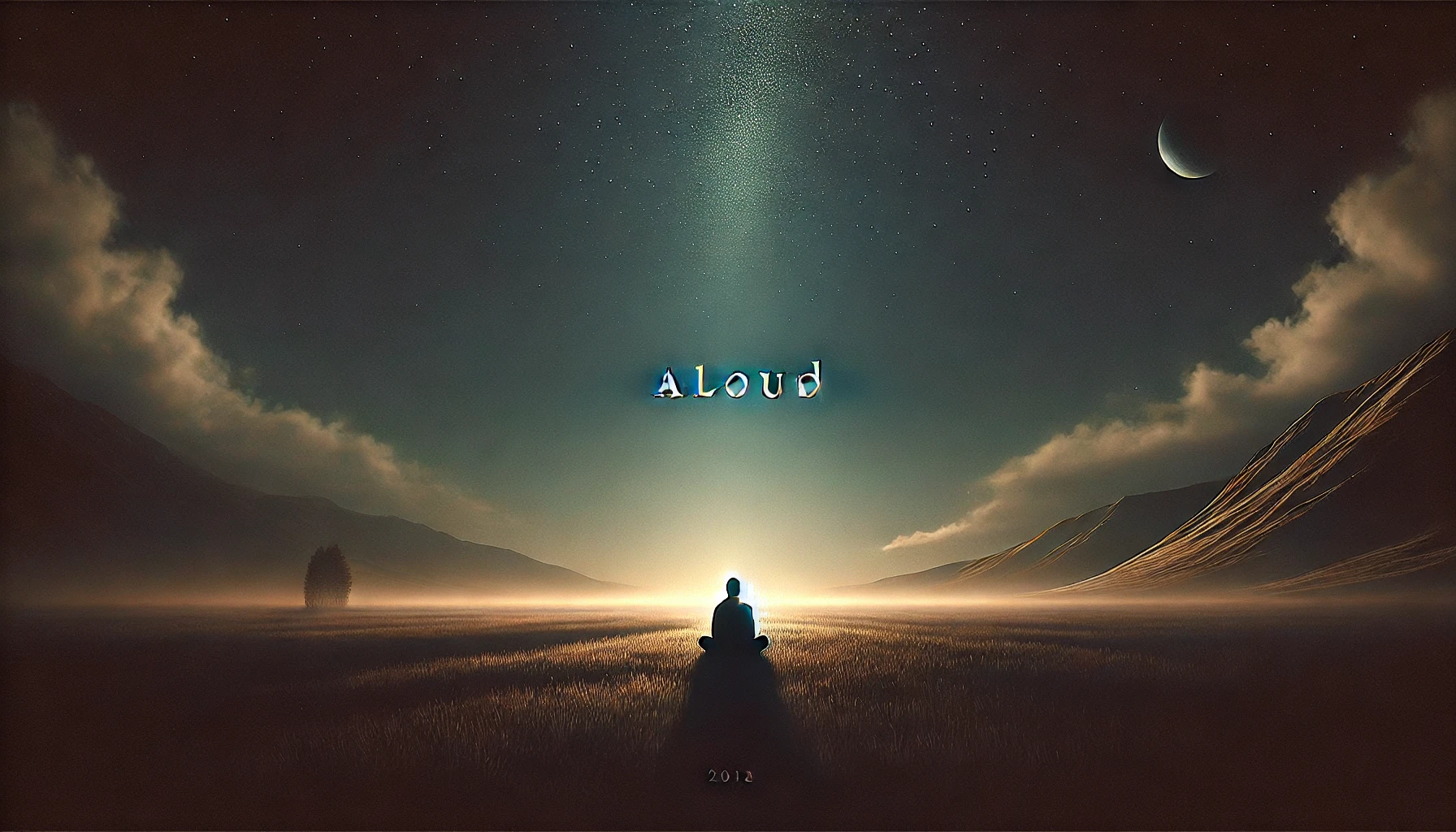
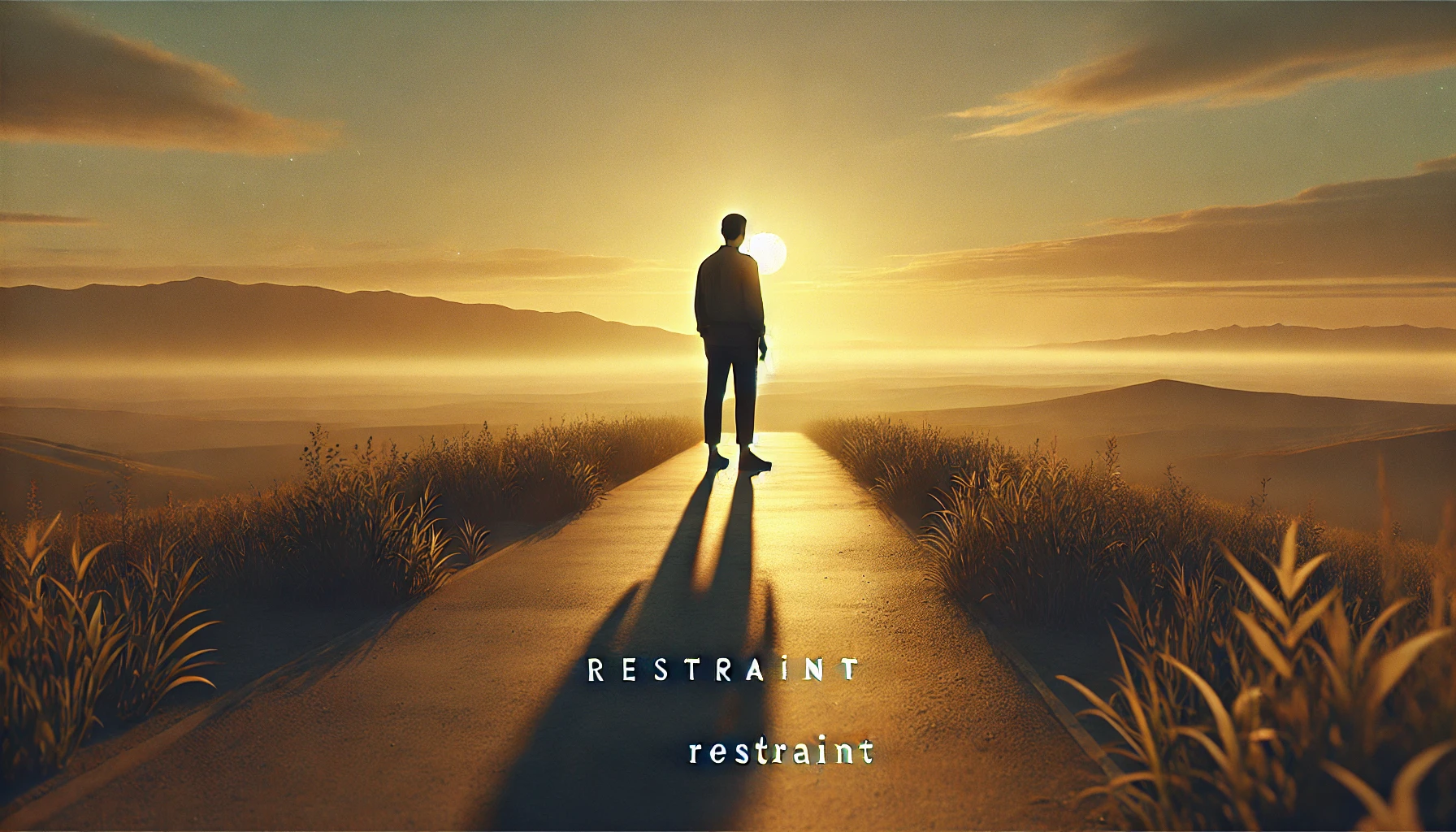
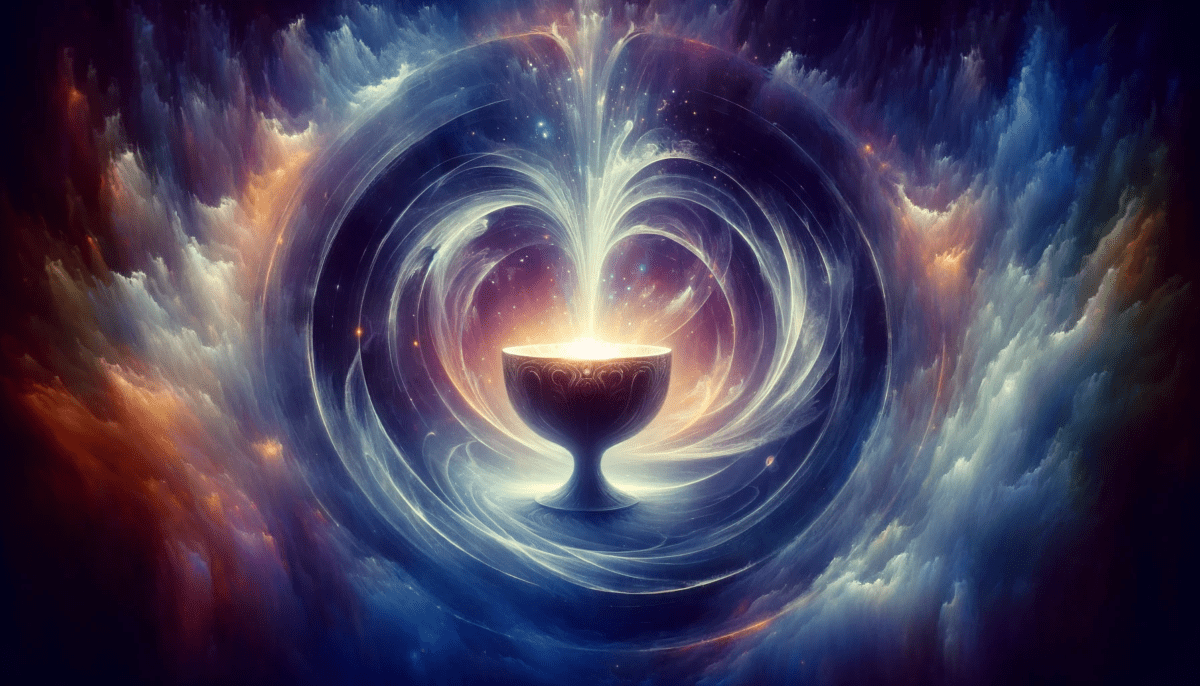
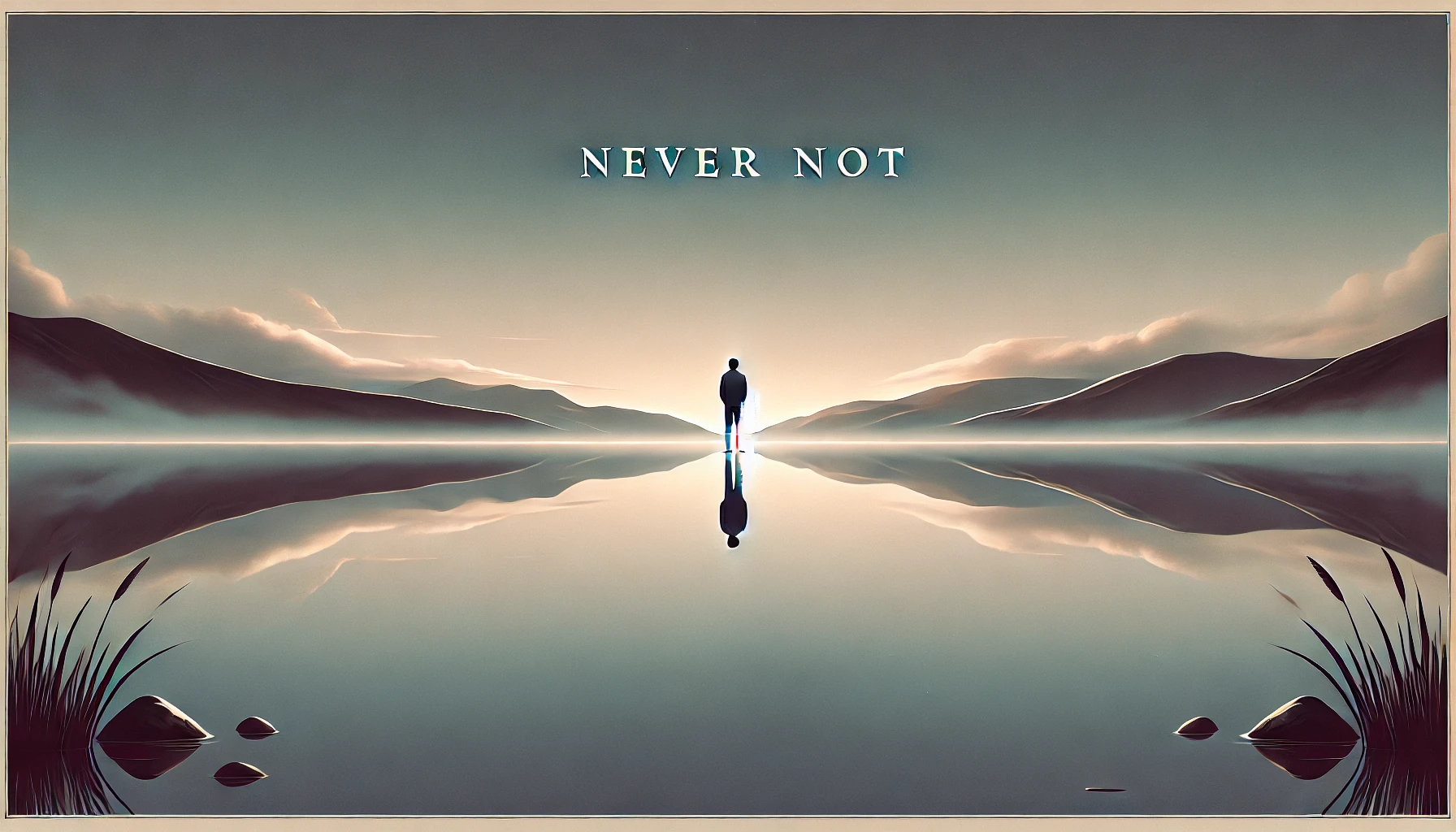




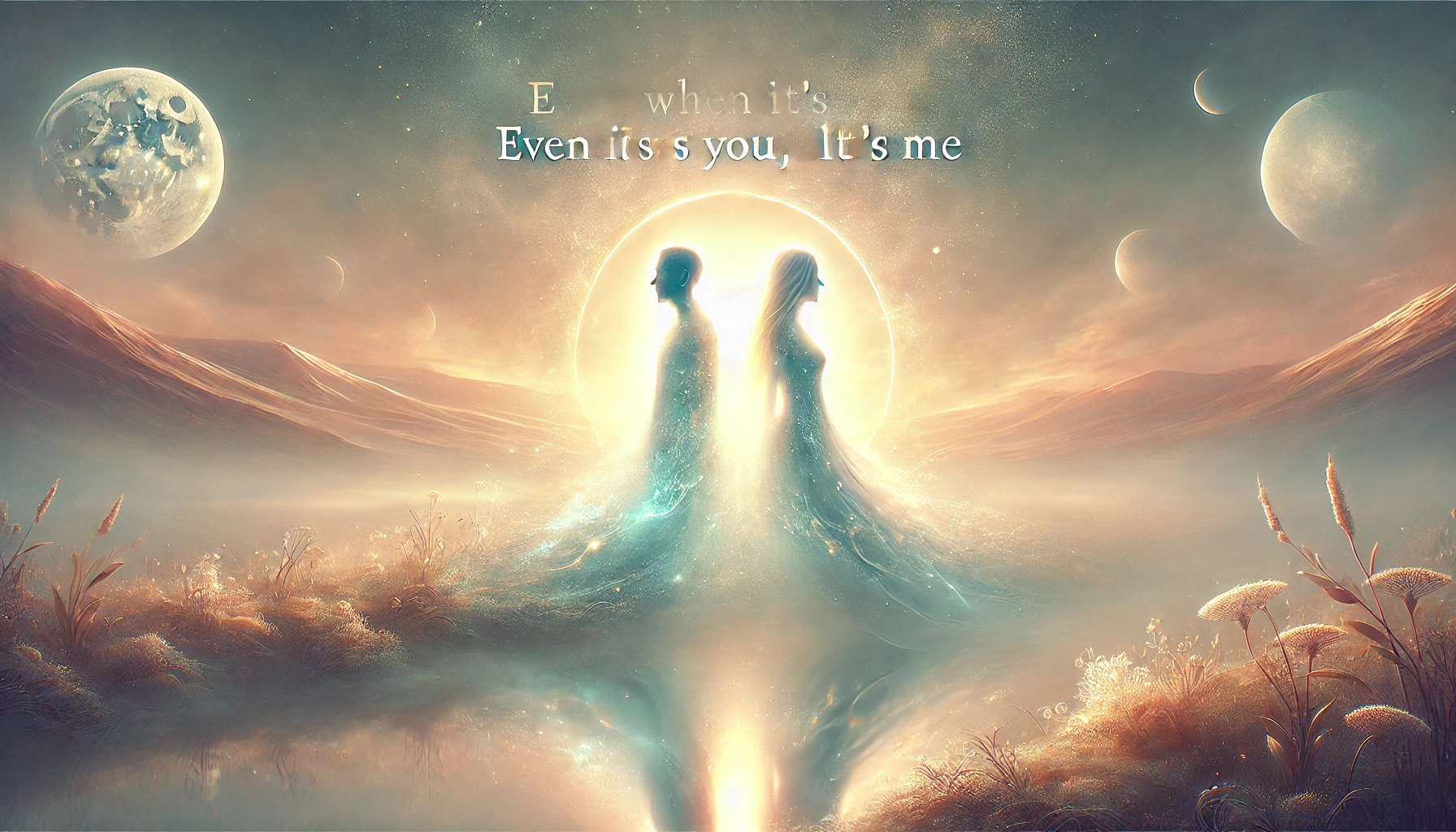
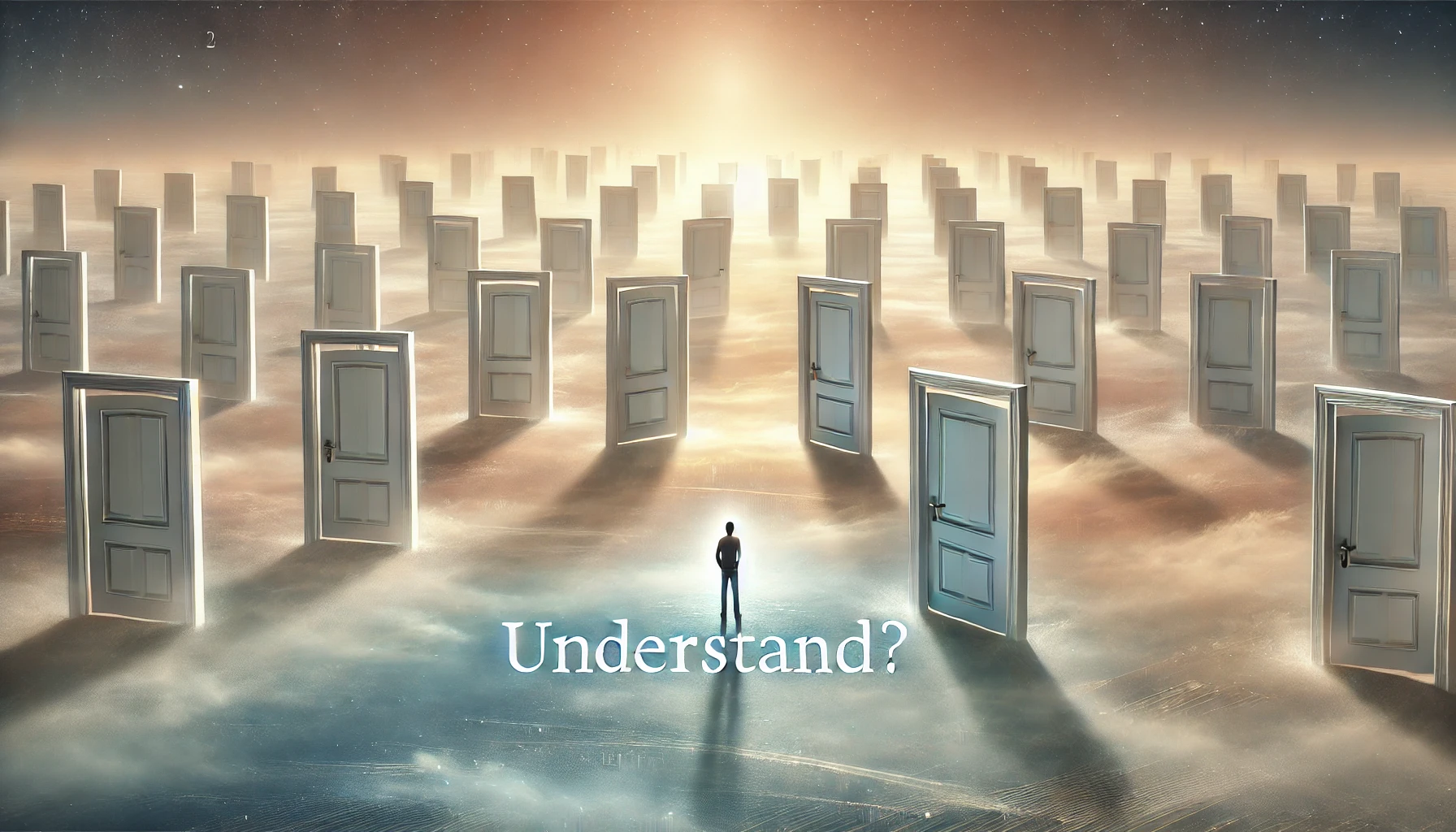







Leave a Reply